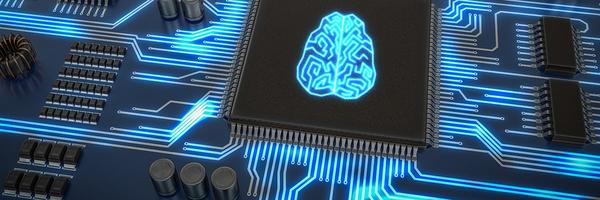
Gothenburg University makes breakthrough in energy efficient computers
The University of Gothenburg (UoG) is claiming a major breakthrough in the development of computers that can work as energy efficiently as human brains.
Investigations headed by researchers at UoG have succeeded in combining memory and calculation functions in the same component. This is the first time researchers have been able to successfully connect oscillator networks and memristors.
The discovery, emanating from the Topspin (Topotronic Multi-Dimensional Spin Hall Nano-Oscillator Networks) research project being run as a collaboration between the UoG and Japan's Tohoko University, holds the potential to become the catalyst to create more efficient technologies across the broad spectrum of mobile telephones, drones and self-driving vehicles.
“Finding new ways of performing calculations that resemble the brain’s energy-efficient processes has been an important goal of research for decades. Cognitive tasks, like image and voice recognition, require significant computer power; and mobile applications, in particular mobile phones, drones and satellites, require energy-efficient solutions,” said Johan Åkerman, professor of applied spintronics at UoG’s department of physics.
The headway made to fuse memory and calculation functions into a paired component provides a gateway to new advances where these same components can function more like the brain’s energy-efficient neural networks, Åkerman said.
“These components can become important building blocks in future to develop more brain-like computers. The more energy-efficiently cognitive calculations can be performed, the more applications become possible,” said Åkerman.
In February 2022, the UoG’s department of physics secured a noteworthy €150,000 proof-of-concept grant from the European Research Council (ERC) that will be used to develop and commercialise advances within the sphere of the Åkerman-led Topspin neuromorphic computing project. The ERC had earlier awarded a €2.5m grant to the Topspin project in March 2019.
“Quantum-inspired computers, such as Ising machines, have proven to be able to handle the kind of calculation problems that today’s conventional computers cannot solve within a reasonable time or at a reasonable energy consumption. The goal of this research project is to build and compare a new, completely magnetic, quantum-inspired Ising machine based on two-dimensional networks of so-called spin-Hall nano-oscillators,” Åkerman said.
In the Topspin project, researchers at UoG and Tohoku University were able to display the first integration of a cognitive computing nano-element (the memristor) into another – a spintronic oscillator.
Arrays of these memristor-controlled oscillators, which amalgamate the non-volatile local storage of the memristor function with the microwave frequency computation of the nano-oscillator networks, can closely imitate the non-linear oscillatory neural networks of the human brain, said Shunsuke Fukami, professor and the project leader at Tohoku University.
“So far, artificial neurons and synapses have been developed separately in many fields. This new work marks an important milestone: two functional elements have been combined into one,” Fukami said.
Quantum-style leaps in the direction of next-generation advanced machines means that modern computers have been able to tackle even more challenging cognitive tasks such as language and image recognition. The degree of progress being made in this field has been greatly enhanced through artificial intelligence-led innovations.

One of the key discoveries in the UoG’s joint research programme with Tohoko University is the linking of oscillator networks and memristors, the two main tools for advanced calculations. The oscillators and oscillating circuits have the capacity to perform complex calculations in a comparable manner to human nerve cells. Memristors, incorporating an integrated memory, are also capable of functioning as programmable resistors to perform calculations.
Comparable to memory cells, the ability to integrate oscillators and memristors represents a huge advancement in research that has far-reaching implications and energy-saving advantages for sectors energy-efficient technologies such as mobile telephones, said Åkerman.
“More energy-efficient calculations could lead to new functionality in mobile phones. One good example is digital assistants like Siri or Google. Today, all processing is done by servers since the calculations require too much energy compared to the size of a normal phone. If the calculations could instead be performed locally, on the actual phone, they could be done faster and easier without the need to connect to servers,” Åkerman said.
Sweden and Japan’s ‘breakthrough’ research
The “breakthrough” moment for UoG and partner Tohoko University transpired after a sustained period of research and significant funding by state agencies in Sweden and Japan over the period 2019 to 2021.
In Sweden, the research project received partial-funding, in the form of grants, from the Swedish Research Council (Vetenskapsrådet) and the European Union’s (EU) Horizon 2020 (H2020) multichannel research and innovation programmes. With a budget of around €80bn, the H2020 is the largest of the EU’s research and innovation framework programmes.
The Tohoku University’s research work is being largely grant funded by the Japan Society for the Promotion of Science (Nihon Gakujutsu Shinkō Kai) with additional financial support provided by RIEC Cooperative Research Projects, the research institute of electrical communications arm of Tohoku University.
The scaling-up of local funding in Sweden and in Japan, combined with access to finance from ERC grants, helped to bolster Topspin’s research activities and output in 2019 and 2020.
By September 2020, the project was already reporting progress in developing a voltage-controlled spintronic microwave nano-oscillator on top of new advances in tuning both the microwave frequency and the threshold current with negligible energy consumption using a voltage-induced electric field.
Among the research project’s primary application-based focus points was the need to identify patterns connected to the memristive control of mutual spin Hall nano-oscillator synchronisation for neuromorphic computing. For researchers, the synchronisation of large spin Hall nano-oscillator (SHNO) arrays provides a potentially attractive route to ultrafast non-conventional computing.
Substantial challenges remain for UoG and Tohoku University to achieve further advances in research. One significant obstacle involves finding workable solutions in the area of interfacing to the array, tuning individual oscillators and providing built-in memory units.
Tests are ongoing in Gothenburg to demonstrate that two individually controlled memristors can be used to tune a four-SHNO chain into differently synchronised states. Memristor gating is considered an optimally efficient approach to input, tune and store the state of SHNO arrays for non-conventional computing models.
A significant goal embedded in Topspin is to use the project to trigger a technology shift from digital calculations to calculations based on oscillator networks. The short-term to long-term objective is to demonstrate calculations at frequencies above 100 GHz. Existing circuits have reached speed limits close to 4 GHz.
A real challenge for partners UoG and Tohoku University is to find solutions that can accelerate the development of energy-efficient and tunable artificial neurons that are capable of emulating brain-inspired processes.
The Swedish-Japanese partnership’s ability to demonstrate a novel voltage-controlled spintronic microwave oscillator, that is capable of closely imitating the non-linear oscillatory neural networks of the human brain, marks an important milestone in meetingfuture targets in the Topspin project.
}})